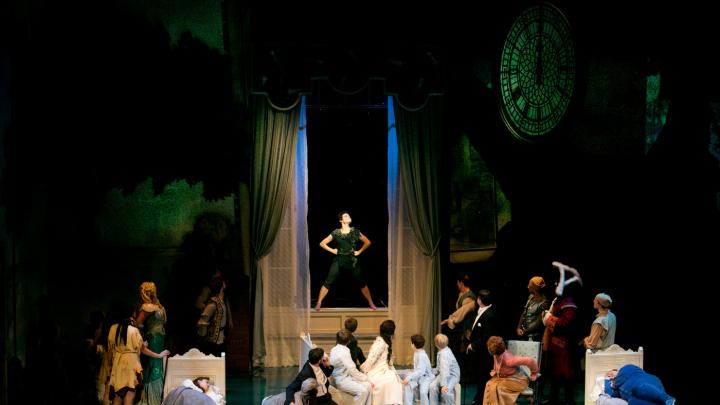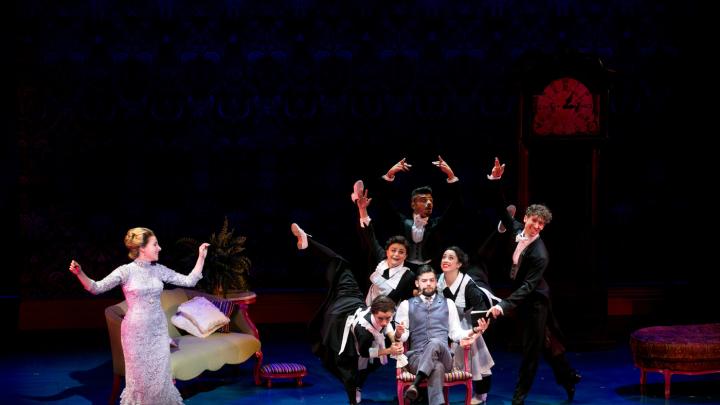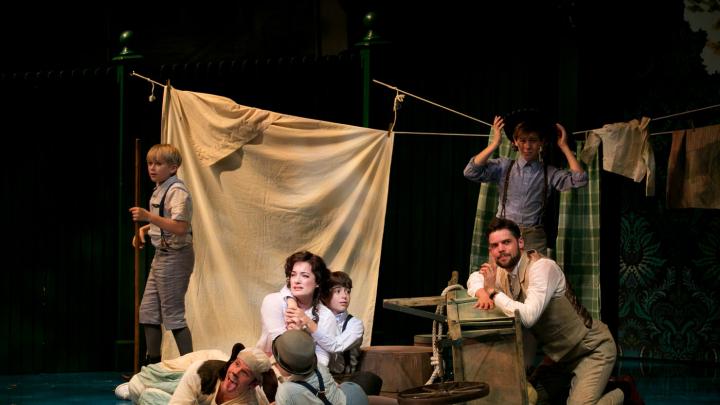The new musical theater production Finding Neverland, which opened to a sold-out house at the American Repertory Theater on August 13, extends the century-old mythology of Peter Pan. The saga of the boy who would not grow up, with its crocodiles, Captain Hook, and the fairy Tinker Bell, began onstage with the play Peter Pan, which opened in London in 1904. The ageless boy has been reincarnated countless times since, in a Disney film in 1953, on the Broadway stage with Mary Martin as Peter in 1954, by Stephen Spielberg in the 1991 movie Hook. In 2004, the film Finding Neverland mixed Pan’s story with that of his creator, Scottish author and playwright J.M. Barrie (1860-1937), played by Johnny Depp. The ART production—with a new score by Gary Barlow and Eliot Kennedy, book by James Graham, and direction by Tony-award winning Diane Paulus, the company’s artistic director—received an enthusiastic reception at the Loeb Drama Center, where it will run through September 28. It is scheduled to open on Broadway next March. (Finding Neverland also represents the first venture as a lead producer in theater for the distinguished film producer Harvey Weinstein, whose movies have won several Academy Awards, including the Best Picture for Shakespeare in Love.)
The story relates some of Barrie’s marital and professional troubles while writing the play and getting it staged by his real-life theatrical producer, Charles Frohman, who, in a theatrical wink at the business side, doubles as Captain Hook, the villain of the play-within-a-play. Barrie’s close relationship with family friend Sylvia Llewelyn Davies and her four sons, who inspired his work on Peter Pan, lies at the core of the play. Its infectious score by Barlow and Kennedy, as realized by a small pit orchestra and several fine voices in the cast, had both rhythm and pace, with some of the long production numbers moving fluidly between interludes of dialogue and song. (Barlow is the front man and lead vocalist for the pop group Take That and one of England’s most successful songwriters.) Mia Michaels designed the energetic choreography for the large cast; the dancing included fresh touches like synchronized head-jerks, repeated in a way that recalls stroboscopic photography, and extravagant, comical gestures like tossing a roast across the room to another dancer during a dinner-party scene in which a servant finishes her delivery of a platter with an arabesque. The production numbers often involve as many as a score of dancers twirling, climbing, leaping, running, and relocating elements of the set, in a mesmerizing spectacle.
In an essay on Peter Pan for the ART’s Guide publication, children’s literature expert Maria Tatar, Loeb professor of Germanic languages and literatures and chair of Harvard’s folklore and mythology program, writes that “Barrie, more than any other author of children’s books, attempted to level distinctions between adult and child, as well as to dismantle the opposition between creator and consumer….He aimed to produce a story that would be sophisticated and playful, adult-friendly as well as child-friendly.” By that measure, it appears that Finding Neverland at the ART admirably realizes the aims of Peter Pan’s creator.











